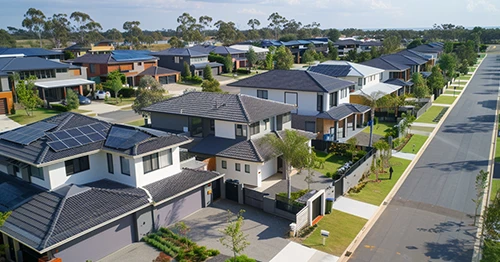Updated: 11 Mar, 2025
Australia’s housing market is experiencing a recovery, with home values rising by 0.9% in January 2021.
All the capital and regional cities record a rise in their home values, with regional capitals averaging 1.6% growth while capital cities averaged 0.7%.
Why are people moving towards regional cities?
Regional Victoria and Regional NSW rose 1.6% and 1.5% respectively, compared to a 0.4% increase in Melbourne and Sydney’s home values.

According to CoreLogic’s research director, Tim Lawless, “Internal migration data shows more people are leaving Sydney and Melbourne for regional areas, resulting in a transition of activity from the metro regions to the outer fringe and regional markets. This demographic trend is further compounded by the demand shock of stalled overseas migration. As Melbourne and Sydney historically receive the vast majority of overseas migrants, these metro areas have been the hardest hit by this demand shock.”
People are moving towards regional cities because of:
- Better housing affordability compared to the capital
- Opportunity for remote working arrangements
- Opportunity for a lifestyle change
- Lower density housing options
It’s a seller’s market
This is a seller’s market, where supply levels are low, while demand is strong.
- Housing values are rising against the backdrop of low advertised supply and increasing buyer demand.
- The number of fresh listings added to the market nationally over the four weeks ending 24 January 2021 was 3.3% lower than the same period last year. Melbourne and Perth are the only cities where listings were 20.8% and 2.2% higher than last year, respectively.
- While fresh stock levels are closer to what they were a year ago, the total advertised inventory is low. The total listings were 27.8% lower than this time last year. Melbourne was the only city to experience a 7.7% increase in listing numbers compared to the previous year, due to a rise in advertisements for apartments which are experiencing lower levels of demand.
- The strong rate of absorption from increasing buyer demand is affecting housing supply for homes. National home sales over the past three months were 23.9% higher than the same period last year. Regional home sales are estimated to be 26.8% higher, and capital city sales were 22.1% higher than last year.
Unit market is recovering
Houses are still outperforming units, with housing values rising to 3.5% over the past six months, while unit values remain unchanged.
Unit rents in Melbourne and Sydney were down 7.8% and 5.6% respectively over the past year.
Fortunately, the rate of decline is easing across the market.
- Sydney’s unit rents were 0.8% higher in January 2021 since March last year.
- Melbourne’s unit rents have held firm.
- Part-time job numbers are recovering to pre COVID levels, and more businesses are planning to return to work which could support demand for inner-city renting.
- Perth and Darwin had the largest rental increases after a long run of falling rents and low investment activity levels.
Housing market recovery going strong
Despite the pandemic and economic uncertainty, data from the Australian Bureau of Statistics (ABA) reveal borrowers seeking owner-occupied loans increased by 38.9% in the 12 months from December 2019 to December 2020.
Australia’s housing market is still going strong, and house prices are up in January.
- Low-interest rates for home loans are a key factor supporting housing market recovery.
- First home buyers are driving property demand as there are offers and schemes available to them.
- There is buyer activity even with no overseas migration.
- Expats are looking to buy property in Australia, so they have a home to return to.
- Regional areas are more affordable than their capital counterparts.
- Borrowers are resuming their mortgage repayments after taking a repayment holiday. Data from the Australian Prudential Regulation Authority (APRA) reveals at the end of December 2020, the value of home loan deferrals was $43 billion compared to its peak of $192 billion in May.
However, there are risks associated with the housing market recovery:
- Lenders could tighten their policies to avoid borrowers with low deposit or high debt to income ratios or expats returning to Australia.
- The virus’s outbreak is a constant threat with recent outbreaks and border closures having a negative impact on consumer sentiment.
- According to ABS data, the HomeBuilder grant led to a 17.7% increase in construction loans in December, more than doubling since June. The grant and other government schemes like JobKeeper, JobSeeker, etc., are winding down in March 2021.
- There is not enough property to sell, and councils are freeing up land for developments, however, building a new home takes time.
Are you looking to buy your first home or refinance to a better interest rate?
Our mortgage brokers are here to help. Call us on 1300 889 743 or enquire online.






